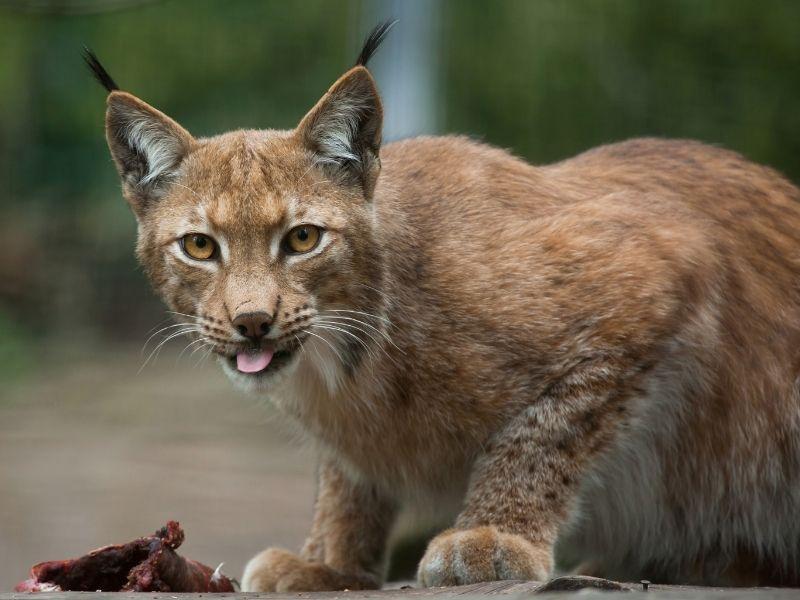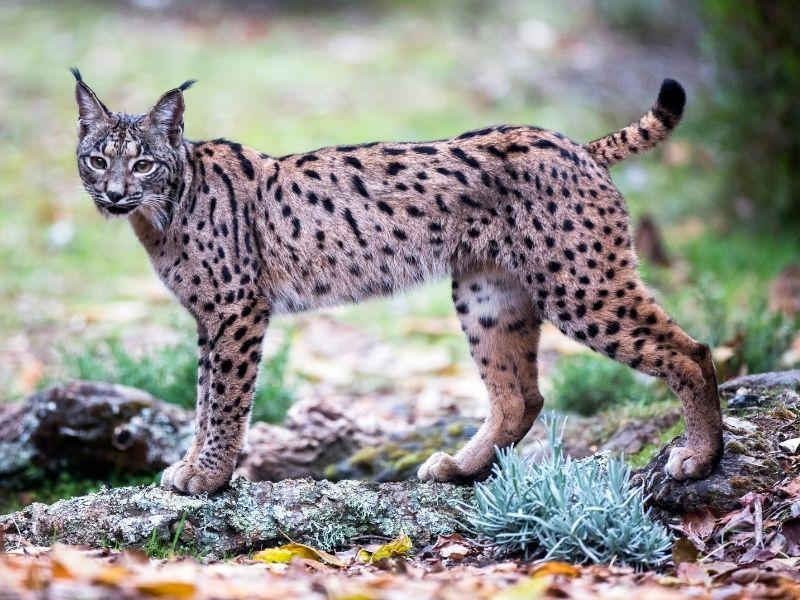Wildcats and domestic Cats are both felines, but there are some key differences between them. Wildcats are typically larger than domestic Cats, and they have shorter fur. Wildcats also tend to be more aggressive and territorial than domesticated Cats.
One of the most significant distinctions between Wildcats and domestic Cats is their ability to mate. Domestic Cats can reproduce with other domestic Cats, but Wildcats cannot mate with domestic Cats. This is because domestication has caused a change in the genes of domestic Cats that prevents them from reproducing with Wildcats.
Wildcats also typically eat prey while domestic Cats have food provided by their owner. While both species also hunt and scavenge, Wildcats are more likely to eat what they kill; small mammals, reptiles, and birds, rodents and rabbits.
Another way that Wildcats and domestic Cats differ is in their level of aggression. Wildcats are generally more aggressive than domestic Cats, and they are also more territorial. This means that Wildcats are more likely to attack other animals that enter their territory. Domestic Cats, on the other hand, are typically less aggressive and more relaxed around other animals.
While there are some significant differences between Wildcats and domestic Cats, they are both still Felines. This means that they share many of the same characteristics, such as their love of napping and their independent nature.
What’s the Difference Between a Domestic Cat and a Wildcat?
Here are some of the key differences between domestic Cats and Wildcats:
1. Wildcats Are Typically Larger Than Domestic Cats.
The average Wildcat weighs between 11 and 18 pounds, while the average domestic Cat weighs between 8 and 10 pounds. The largest domestic Cat on record weighed in at 21.297 pounds, but the average domestic Cat is much smaller than the average Wildcat. With their larger size, Wildcats are also typically taller than domestic Cats.
2. Wildcats Have Shorter Fur Than Domestic Cats.
The fur of a Wildcat is typically shorter and less dense than the fur of a domestic Cat. This is because Wildcats need less insulation from the cold than domestic Cats. The shorter fur of a Wildcat also makes it easier for them to move around in the dense underbrush of their habitat.
3. Wildcats Are More Aggressive and Territorial Than Domestic Cats.
Wildcats are known for their aggression and for their strong desire to protect their territory. They will often attack other animals that enter their space, whereas domestic Cats are typically less aggressive and more relaxed around other animals.
4. Wildcats Cannot Mate with Domestic Cats.
The genes of domestic Cats have been changed by domestication, which prevents them from being able to mate with Wildcats. This is because the two species are now genetically incompatible.

Are Wildcats Bigger Than Domestic Cats?
Yes, Wildcats are typically larger than domestic Cats. While there is no definitive answer as to why this is the case, it is thought that domestication has led to smaller Cats in order to better suit human companionship.
The size of a Wildcat also depends on the specific species. For example, the European Lynx can grow to be about twice the size of a domestic Cat, while the Scottish Wildcat is only slightly larger.
The average domestic Cat weighs between 8 and 10 pounds, while the average Wildcat weighs between 11 and 18 pounds. This weight difference is most likely due to the difference in diet between domestic and wild Cats. Domestic Cats typically eat a diet of commercially prepared Cat food, while Wildcats must hunt for their food. The hunting and scavenging required to find food can help keep Wildcats lean and muscular, which contributes to their larger size.
See Also: Mixing Wild Cat Breeds with Domestic Cats
And: How Long Do Domestic Cats Live?
Can a Wildcat Mate with a House Cat?
No, Wildcats and domestic Cats cannot mate. This is because they are two different species. Although they may look similar, they have a different genetic makeup that prevents them from reproducing together.
The only time a Wildcat and domestic Cat can reproduce is if the domestic Cat is bred with a Wildcat hybrid. A hybrid is a Cat that is the offspring of a Wildcat and a domestic Cat.
When mating animals, they must be of the same species in order to produce offspring. This is because they must have compatible DNA in order to successfully reproduce. If a Wildcat and domestic Cat were to mate, their offspring would be sterile and unable to reproduce.
Mating animals that do not belong to the same species will result in offspring that are sterile and unable to reproduce. This is because the DNA of the two animals is not compatible. In order for two animals to produce fertile offspring, they must have compatible DNA.
Will a Wildcat Eat a Domestic Cat?
No, Wildcats will not typically eat domestic Cats. This is because Wildcats are obligate carnivores, meaning they require a diet of meat in order to survive. While it is possible for a Wildcat to eat a domestic Cat, it is not common. Wildcats typically prefer to eat small prey animals such as rodents or rabbits. Domestic Cats are not typically preyed upon by Wildcats.
The only chance a domestic Cat has of being eaten by a Wildcat is if the domestic Cat strays into the Wildcat’s territory. If this happens, the Wildcat may view the domestic Cat as a threat and attack it. However, if the Wildcat does not see the domestic Cat as a threat, it is unlikely to attack it.
If a Wildcat does attack and eat a domestic Cat, it is not because the Wildcat is hungry. Wildcats typically kill more prey than they can eat and will store the excess food for later. This behavior is known as caching.
While domestic Cats and Wildcats may look similar, they are actually quite different. Domestic Cats are smaller than Wildcats, and they cannot mate with each other. Wildcats also typically prefer to eat small prey animals, and will not usually attack and eat a domestic Cat.
Featured image: An Iberian Lynx Wildcat

